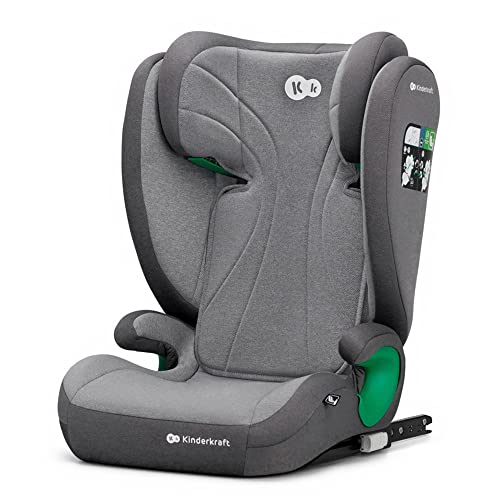Five Killer Quora Answers On Pushchair And Pram
페이지 정보

본문

Understanding Pushchairs and Prams: A Comprehensive Guide
When it pertains to baby mobility, the terms "pushchair" and "pram" are often utilized interchangeably. Nevertheless, they represent distinct types of baby carriers, each crafted for particular phases of a child's advancement and varied adult requirements. This post explores the crucial distinctions in between pushchairs and prams, their features, types, and factors to consider for new parents.
What is a Pushchair?
A pushchair, frequently referred to as a stroller in some areas, is designed for children who can stay up separately. Normally, pushchairs are modern-day, light-weight, and have a seat that can be reclined for added comfort. They might also feature a five-point harness to ensure the child's safety while on the go.
Key Features of Pushchairs
- Lightweight Design: Most pushchairs are made from lighter materials, making them easy to navigate and transfer.
- Adjustable Seats: Many designs offer recline options, dealing with resting or active positions.
- Canopy: Most pushchairs come geared up with a sunshade or canopy to secure the child from sun exposure.
- Storage Space: They usually include a lower storage basket, ideal for holding diaper bags or shopping.
Common Types of Pushchairs
- Requirement cheap pushchairs: Traditional alternatives suitable for kids who can sit separately.
- Umbrella Strollers: Lightweight, compact, and simple to fold; ideal for taking a trip.
- All-Terrain Strollers: Built with larger wheels for off-road abilities and smooth trips on varied surface areas.
- Travel Systems: Combines a stroller and an infant safety seat, permitting parents to move their child flawlessly.
What is a Pram?
A pram, short for "perambulator," is mainly developed for babies, usually from birth up until roughly six months. Prams are structured with a flat lying position that supports a newborn's anatomy, ensuring they are cradled effectively.
Secret Features of Prams
- Flat Bed Design: Prams have a completely flat bed, which is essential for young babies who need to lie flat for convenience and health.
- Stylish Aesthetics: Many prams boast vintage or timeless styles, often seen with glamorous materials and appealing surfaces.
- Suspension System: Quality prams frequently consist of a suspension system to provide a smoother ride over rough surface.
- Extended Canopy: Extended sun security and rain covers prevail.
Common Types of Prams
- Traditional Prams: Featuring a standard design, these are frequently styled to evoke fond memories.
- Convertible Prams: These can quickly change from a pram to a pushchair and normally grow with the child.
- Light-weight Prams: More compact pushchair than conventional prams, making them simpler to transport.
Differences Between Pushchairs and Prams
| Function | Pushchair | Pram |
|---|---|---|
| Usage Case | For children who can stay up | For newborns and babies |
| Design | Upright seat with reclining choice | Flat bed for lying down |
| Weight | Normally lighter | Heavier due to tough building and construction |
| Density | Folds quickly and compactly | May be bulkier, depending upon design |
| Age Range | 6 months to 4 years or older | Birth to roughly 6 months |
| Cost Range | More budget friendly alternatives offered | Often more expensive due to materials and design |
Picking Between a Pushchair and Pram
When picking in between a pushchair and a pram centre - Fkwiki.Win,, a number of elements call for factor to consider:
- Age of the Child: Newborns need a pram; older babies and toddlers will be more comfortable in a pushchair.
- Way of life Needs: Parents who travel frequently may choose light-weight pushchairs, while those searching for convenience in design might favor prams.
- Spending plan: Prams can range from reasonably to costly; trustworthy pushchairs can cater to budget-conscious shoppers.
- Storage Space: Consider how easily the picked model can suit your automobile trunk or home storage.
FAQs
Q1: Can I use a pushchair for a newborn baby?
While specific pushchairs are created with reclining functions that might accommodate babies, it is normally advised to utilize a pram or specifically designed baby cars and truck seat for newborns.
Q2: Are travel systems worth the investment?
Travel systems can offer convenience by integrating a cars and truck seat and a stroller. They permit seamless shift from vehicle to stroller, which many moms and dads discover important.
Q3: How do I maintain my pushchair or pram?
Regularly tidy the fabric, check for mechanical problems, and oil the wheels. Make sure to follow specific care instructions offered by the maker.
Q4: What is the weight limitation for pushchairs and prams?
Weight limits differ by model: normally, pushchairs accommodate approximately 50 lbs, while prams fit babies up to 30 lbs. Constantly describe the manufacturer's standards.
Q5: Is it necessary to have a rain cover for my pushchair or pram?
Yes, a rain cover can secure your child from rain and wind, keeping convenience while preventing wet clothing.
In summary, pushchairs and prams serve important but unique roles in the movement landscape for moms and dads and caretakers. Selecting the best design depends on the child's age, way of life needs, and household preferences. By understanding the characteristics, advantages, and distinctions in between pushchairs and prams, parents can make educated choices that make sure convenience and safety for their kid. Whether strolling through the park or navigating busy streets, the best pram stroller movement service is out there waiting.
- 이전글The 10 Most Terrifying Things About New Key For Fiat 500 25.09.11
- 다음글Why We Love Buy Fake Driver's License Online (And You Should Too!) 25.09.11
댓글목록
등록된 댓글이 없습니다.
